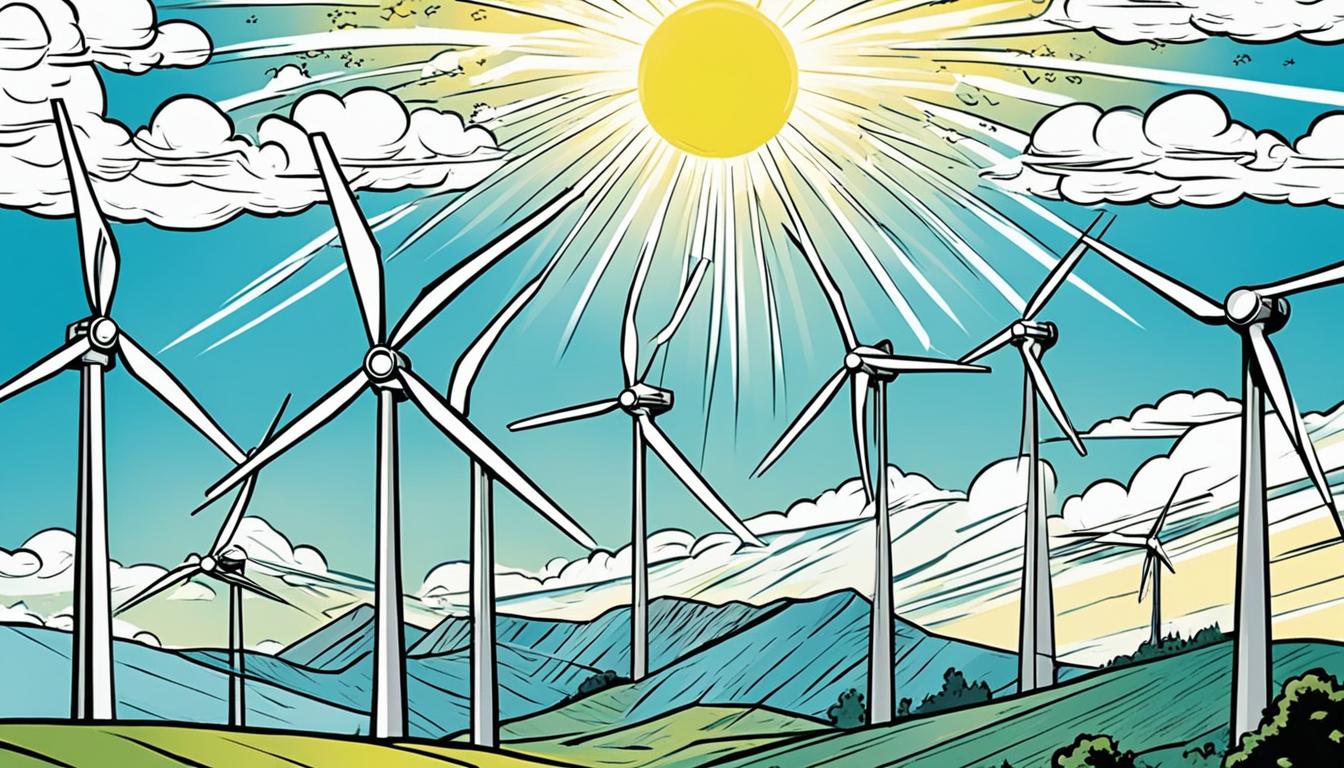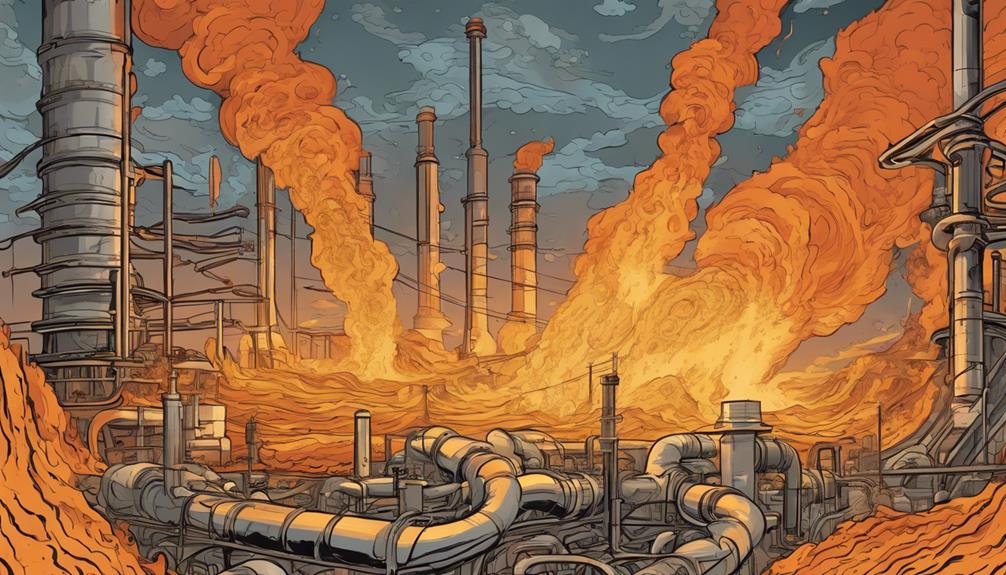You'll find over 400 hydrogen fueling stations worldwide. Countries like Japan, South Korea, Germany, France, the UK, Canada, China, and the US lead in hydrogen infrastructure. These nations are making significant advancements in hydrogen station development to support the growing demand for hydrogen-powered vehicles.
Key Takeaways
- There are over 400 hydrogen fueling stations globally.
- Countries like the US, Japan, and Europe have extensive hydrogen station networks.
- Efforts are ongoing to expand hydrogen station availability worldwide.
- South Korea, China, and Japan lead in hydrogen infrastructure investments.
- Global collaboration is essential to address the disparity in hydrogen station numbers.
Global Hydrogen Station Distribution
Global distribution of hydrogen fueling stations varies greatly across countries. Some countries like Japan, South Korea, China, Europe, Canada, and the US have made significant investments in developing hydrogen infrastructure.
European nations such as Germany, France, and the UK stand out for their extensive network of hydrogen fueling stations. Japan, particularly in cities like Tokyo, leads the way in hydrogen infrastructure development. Efforts are also being made in regions like South Korea and China to expand the availability of hydrogen stations to support the growing demand for fuel cell vehicles.
The number of hydrogen stations in a country is influenced by various factors including station costs, government incentives, and hydrogen safety regulations. While some countries have made substantial progress in building hydrogen pipelines and stations, others are still in the early stages of developing their hydrogen infrastructure.
This disparity highlights the importance of global collaboration to secure a more even distribution of hydrogen fueling stations worldwide.
Hydrogen Infrastructure Overview

Investing in hydrogen infrastructure is necessary for advancing the adoption of fuel cell technology worldwide. The infrastructure comprises production points, distribution stations, and efficient pipeline transport systems. Notably, countries like South Korea and Japan have made significant investments in hydrogen infrastructure, with Japan's Fukushima Hydrogen Energy Research Field standing out as the world's largest hydrogen production facility.
Hydrogen pipelines play an important role in cost-effective long-distance transport, a key component for the commercialization of fuel cell technology. Global hydrogen demand hit 71 million metric tons in 2019, driven by the transportation sector's growing reliance on hydrogen. To support fuel cell vehicles, countries such as Japan, South Korea, China, Europe, Canada, and the US have implemented varying numbers of hydrogen fueling stations.
These stations are essential for ensuring the accessibility and convenience of refueling options, further encouraging the adoption of hydrogen as a clean energy alternative.
Challenges in Hydrogen Station Development

Facing various obstacles, the development of hydrogen stations encounters challenges such as high construction costs and concerns about safety and supply interruptions.
The hazardous nature of hydrogen, with its low ignition energy, poses safety challenges during station development. Frost formation risks during refueling further complicate the construction and operation of hydrogen refueling stations.
Additionally, some countries have witnessed closures of hydrogen refueling stations, hindering the growth of hydrogen infrastructure. Overcoming these challenges is critical as infrastructure development plays a pivotal role in meeting net zero targets.
The high construction costs associated with hydrogen stations can be a significant barrier to their widespread implementation. Addressing safety concerns and finding solutions to supply interruptions are indispensable steps in ensuring the successful development of hydrogen refueling stations globally.
Global Hydrogen Fuel Station Expansion

With over 400 hydrogen fueling stations worldwide, the expansion of hydrogen fuel stations is gaining momentum across various countries. The United States, particularly in regions like Southern California, has been actively investing in hydrogen production and fueling infrastructure to support the growing fleet of fuel cell electric vehicles. The National Renewable Energy Laboratory plays a vital role in advancing research and development efforts to optimize hydrogen station efficiency and reliability.
Countries worldwide are recognizing hydrogen as a valuable resource in achieving sustainable transportation goals, leading to initiatives aimed at expanding the network of fueling stations. This expansion is necessary to meet the increasing demand for hydrogen-powered vehicles and to establish a thorough hydrogen infrastructure that can support widespread adoption.
Efforts to standardize protocols and regulations for hydrogen fueling stations are underway to guarantee safety and interoperability across different regions, fostering a global environment conducive to the growth of hydrogen as a clean energy solution.
Hydrogen Station Safety and Standards

Hydrogen station safety and standards play a critical role in ensuring the secure operation and widespread adoption of hydrogen infrastructure. The Department of Energy's Vehicle Technologies Office coordinates efforts to develop robust safety codes and standards for hydrogen infrastructure, drawing from practices in the chemical and aerospace industries. One key standard is NFPA 2, which serves as a national standard for hydrogen vehicle infrastructure, ensuring safe use for transportation and stationary applications. These standards are crucial in ensuring the safe deployment and operation of hydrogen fueling stations. Many of the standards for hydrogen safety are based on established practices in industries known for their stringent safety regulations. Adhering to these codes and standards is essential for the safe integration of hydrogen technologies. The DOE provides valuable resources and guidance on hydrogen safety, codes, and standards to promote the secure advancement of hydrogen infrastructure.
| Hydrogen Station Safety Standards | Importance |
|---|---|
| DOE's Vehicle Technologies Office Coordinates Standards | Ensures Safe Operation |
| NFPA 2 National Standard | Ensures Safety for Transportation and Stationary Use |
| Based on Established Industry Practices | Ensures Stringent Safety Regulations |
| Adhering to Codes Essential | Promotes Safe Integration |
Frequently Asked Questions
How Many Hydrogen Stations Are There Worldwide?
You'll find over 600 hydrogen fueling stations globally, with top numbers in Japan, Germany, the US, and China. Europe leads in hydrogen infrastructure, and Asia focuses on supporting fuel cell vehicles. Efforts are ongoing for expansion worldwide.
Which Country Has Most Hydrogen Fuel?
Japan has the most hydrogen fuel stations globally. Tokyo and other major cities house many stations. European countries like Germany, France, and the UK have well-developed infrastructure. South Korea, China, and California also lead in hydrogen station development.
How Many Hydrogen Stations Are Being Built?
You're wondering about the number of hydrogen stations being built. Over 100 in California, 5 dual-purpose stations for vehicles, and 59 retail stations in the U.S. as of 2023. More stations are in planning or construction stages.
How Much Is a Gallon of Hydrogen Fuel?
Hydrogen fuel prices vary due to production, transportation, and operational costs. Incentives can lower prices. As infrastructure expands, costs may decrease. Currently, a gallon of hydrogen fuel ranges from $12 to $16, making it pricier than gasoline.
How Many Hydrogen Fuel Stations Are Equipped to Handle Cold Weather?
Hydrogen fuel stations equipped to handle cold weather must meet specific requirements to ensure the proper functioning of hydrogen fuel cells in cold weather. While the exact number of such stations is not widely available, industry leaders are committed to expanding the infrastructure to support this technology in all climates.
Conclusion
Overall, the global hydrogen fuel station network is steadily growing, with approximately 400 stations currently in operation worldwide.
For example, in California, the number of hydrogen fueling stations has more than doubled in the past few years, supporting the state's ambitious goal of promoting clean transportation.
As technology advances and more countries invest in hydrogen infrastructure, the future looks promising for the widespread adoption of hydrogen fuel cell vehicles.










